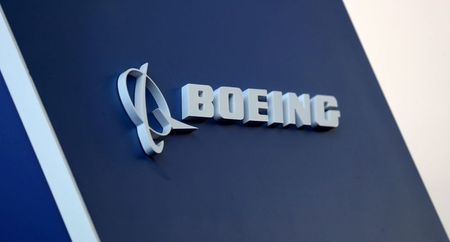What does the Boeing 737 Max disaster mean for flights and business?

As Alaska Airlines Flight 1282 landed safely at Portland International Airport on Friday night, the relief was palpable. The Boeing flight had been flying into the landing strip with a massive hole in the side of the fuselage after an emergency exit blew out 16,000 feet in the air.
No one was killed or badly hurt in the incident but passengers were forced to quickly put on oxygen masks, while there were reports a child’s shirt was dramatically sucked out of the plane.
All eyes are now on planemaker Boeing, whose 737 Max 9 was responsible for the chaos. A turbulent few months lie ahead.
Boeing’s iconic 737 is nigh-on one of the most successful ever made, next to the Airbus A320, yet it has been engulfed in one of the worst scandals in the industry’s history and is repeatedly under scrutiny for production issues.
Two crashes in 2018 and 2019, attributed to faulty cockpit software, resulted in the deaths of 346 passengers and grounded the jets for nearly two years. The Alaska Airlines flight could also have been far worse if the Boeing jet had been flying at its standard 38,000 feet cruising height.
Even leaving out the disasters, a string of production glitches have hit the planemaker’s delivery targets throughout this year and placed the 737 Max under further scrutiny from shareholders amid an already struggling supply chain.
The latest snafu impacted nearly three-quarters of its bestselling fleet, according to the company’s CFO Brian West, and forced the company to cut its annual delivery forecast in October, despite holding firm on its cash flow targets.
Amid ongoing issues, the Alaska Airlines disaster will further undermine investor confidence and could lead to a string of knock-on impacts on the company’s financial performance.
Analysts have speculated in media interviews that the blow-out could even delay the roll-out of the critical 737 Max 10, which drew headlines this year after Ryanair placed a colossal 150-strong, multibillion-dollar order.
UK in the clear
US Federal investigators have launched a probe into how the Alaska Airlines incident happened, with airlines in Turkey and Panama grounding their planes for inspection alongside those in US territory.
For UK passengers, any disruption has so far been averted and will likely be minimal. The Civil Aviation Authority (CAA) has said there were no 737 MAX 9 jets registered in the UK, although they are monitoring the situation and will launch inspections of those that come into the country’s airspace.
Heathrow, the primary hub for transatlantic travel from the UK, has also said there has been no impact on flights from the airport, according to the BBC.
Boeing said in a statement: “Safety is our top priority and we deeply regret the impact this event has had on our customers and their passengers.
“We agree with and fully support the FAA’s decision to require immediate inspections of 737-9 aeroplanes with the same configuration as the affected aeroplane… We will remain in close contact with our regulator and customers.”